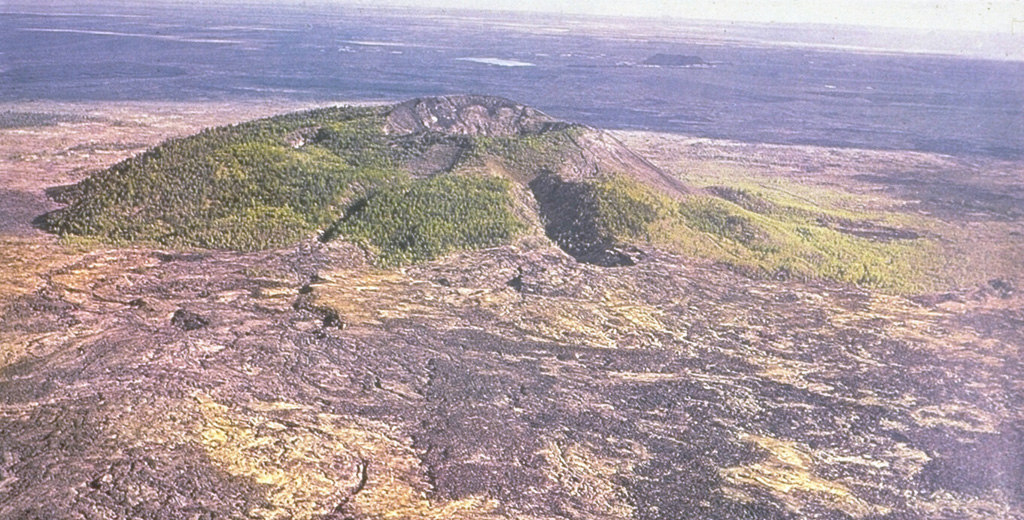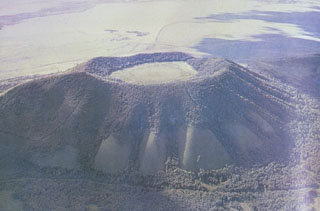Image GVP-02531

Recent lava flows surround the Laoheishan scoria cone, one of which formed during 1719-21. Four radial fissures, two of which are seen in this view from the north, were the source of most of the 1719-21 Shilong lava flows, which cover a 65 km2 area surrounding Laoheishan and the Huoshaoshan scoria cone to the NE. The dominantly pahoehoe lava flows, many of which were tube-fed, blocked local drainages and formed several small lakes at the eastern and northern margins of the lava field.
Photo courtesy of Jim Whitford-Stark, Sul Ross State University, Texas (published in Feng et al., 1979).
![]() This image is made available under the Creative Commons BY-NC-ND 4.0 license terms.
This image is made available under the Creative Commons BY-NC-ND 4.0 license terms.
Keywords: lava flow

Wudalianchi
